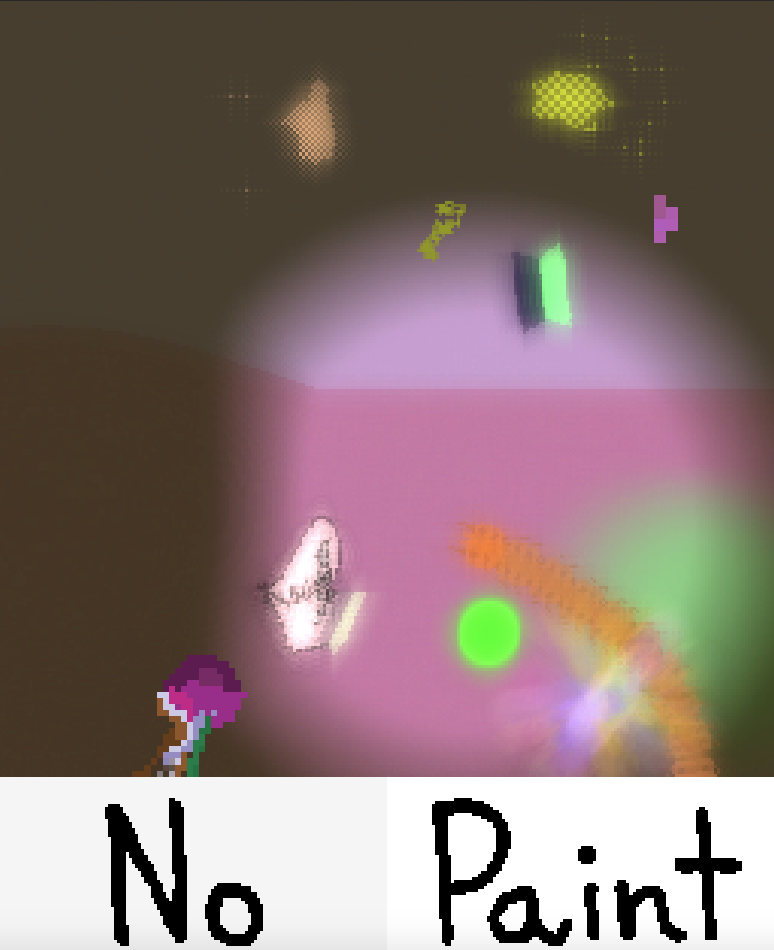Last year, I was browsing Reddit when I stumbled on a post that took me to a little website: https://nopaint.art/. It’s the work of Jeffrey Alan Scudder, a digital artist who teaches Emerging Digital Practices as a professor in Oregon currently. No Paint is a pseudo-random artwork in the sense that the algorithm contributes randomness, but the user can determine how to utilize it.

No Paint is an online painting game / program. However, the user is presented with only two buttons to interact with the canvas: “No” and “Paint”. Within the program, a vast array of brushes, stickers, and effects are programmed in. Each round of painting, the program presents the user with a brush, sticker, or effect: for example, a two-tone brush that snakes in a random direction continuously, or an effect that continuously changes the saturation the entire canvas. When the user clicks “Paint”, the element or effect is applied in its current state. For example, if a user was presented with a randomly snaking brush, they could wait a long time for the brush to cover most of the canvas before pressing “Paint”, or press it shortly after for a short stroke. Pressing “No” cycles onto the next element or effect.
This project stuck with me because of its unique take on drawing programs. Since the brushes are randomly chosen and most never cohere well with your existing artwork, you have very little control over what you can draw on the canvas and have to be creative with using randomly selected elements to form a cohesive artwork.
![[OLD FALL 2020] 15-104 • Introduction to Computing for Creative Practice](wp-content/uploads/2021/09/stop-banner.png)